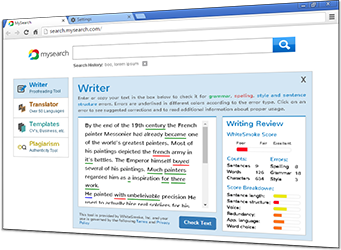Narrative Writing Strategies
http://www.whitesmoke.com/how-to-write-a-narrative.html
Narrative writing means, essentially, writing that tells a story. It might be fiction, or non-fiction (as with writing personal narrative, or memoir writing). The main feature of narrative writing is that it spans time and has a plot--something happens that keeps readers reading to see what's next. A narrative often (but certainly not always) is written in chronological order.
A narrative essay makes its point, or thesis, by telling a story. The story is usually true for the narrative essay, and might be an example, a case study, a way to organize an interview, or a way to show history through narrative. A narrative essay might, for example, tell the story of how Madame Curie discovered radium. However, usually a narrative essay has a point besides simply telling the story--perhaps in the example of Madame Curie, to demonstrate the contributions women made in science against particular odds.
Memoir writing is life writing. As such, it's a form of autobiography, although usually in shorter form or written earlier in one's life than an autobiography. It comes from the memories of the writer, recounting stories of interest to others. Again, as with the narrative essay, memoir writing reveals themes and points that go beyond the mere telling of the story. It might be a lesson learned about life, how love conquers even family quarrels, or the humor that sometimes emerges from serious occasions. An experienced memoir writer selects details that reinforce the theme, and leaves out information that does not further the story or convey the point of the memoir.
In general, all narrative writing makes a point beyond the story and contains selected details, not everything. A personal narrative is a memoir. The terms are interchangeable. A narrative poem is a poem that tells a story. Americans might think of "The Midnight Ride of Paul Revere," others might know "The Charge of the Light Brigade." Both poems tell the story of a memorable historic event, although a narrative poem need not be historical.
Many people want to write a family narrative. This is something like a family memoir, or family history. It often tells the story of ancestors, grand parents, aunts, and uncles, of how the family came to be in a certain place, of how a family business began, or of some other interesting aspect of the family (such as obstacles overcome). Some family narratives tell of immigration, others of the depression in the 1930s, and others of how family members who did or did not survive the holocaust. As with other forms of narrative writing, a family narrative usually conveys a theme and has a point beyond the story itself. However, some family narratives are written as histories to be passed on, and might be written for the sake of telling the story alone.
All of these forms of narrative writing have in common the telling of a story. The story nearly always conveys a theme. Like any good short story, non-fiction and poetic forms of narrative writing develop interesting, three-dimensional characters, describe scenes and settings, and move through a plot. A plot begins with a main character encountering conflict and obstructions while moving through life. The conflicts tend to increase to a crisis point, then resolve. The writer ties up loose ends as the action falls to the end. In short, narratives have a beginning, middle, and end.
While it is common to write a narrative in chronological order (the order of time unfolding), it is not unusual for narrative writing begin in rising action and then unfold earlier times as they move forward. This is a familiar narrative writing strategy from the movie flashback. Experienced writers often experiment with narrative strategies that at once unfold the story (or plot), reveal a theme, and hold the reader's attention.
The movie Memento provides a unique narrative in that it moves backward through time as the main character uses a strategy to overcome his amnesia. The novels Ceremony (Leslie Marmon Silko) and Beloved (Toni Morrison) both use narrative strategies that circle around a central moment of the story, revealing it in layers. Anyone who wants to learn about narrative writing needs to read narratives--from histories to memoir (autobiography) to fiction. Reading will provide lots of examples of narrative writing.



